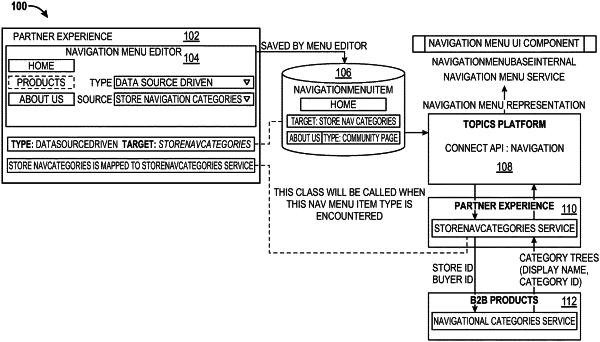| CPC G06Q 30/0603 (2013.01) [G06F 3/0482 (2013.01); G06F 16/2246 (2019.01); G06F 16/951 (2019.01); G06Q 30/0633 (2013.01); G06Q 30/0641 (2013.01)] | 18 Claims |

|
1. A method, comprising:
creating a product category list with a computer system with a processor and a computer readable electronic data storage media which contains a multi-tenant database system, where the product category list is created using an application programming interface (API) that provides tenant specific run-time metadata that is accessed from within the multi-tenant database, where the product category list includes one or more product categories, and where a product category of the one or more product categories corresponds to one or more products from the seller;
organizing the product category list into a tree hierarchy, where the tree hierarchy defines an order of the one or more product categories;
storing the product category list into a database for later retrieval;
receiving a query from a user of a website;
in response to the user query:
accessing, by the API at runtime, the stored product category list in the database and the tree hierarchy;
in response to accessing the stored product category list and the tree hierarchy, filtering the stored product category list based on the tree hierarchy, where criteria for filtering is automatically updated based on the identity of the user as pre-determined by the seller to reflect;
changes, additions and removals in the product category list,
lack of product inventory,
product expiration dates, and
entitlements for the user that include products the user is allowed to view and purchase at a price based on a previously negotiated contract price with the user;
causing display of the filtered product categories received from the API as a product menu to the user of the website via a user interface (UI).
|